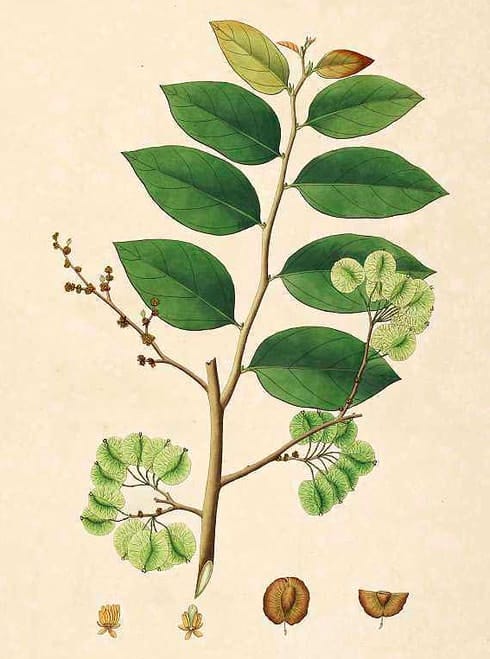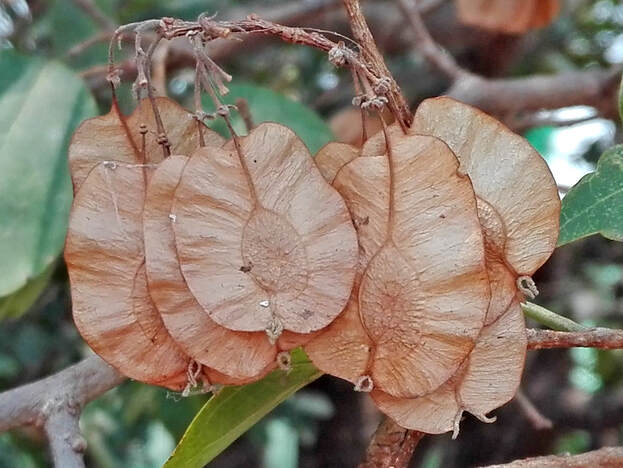Holoptelea, Chirabilva
Indian Elm Tree, Jungle Cork Tree, Monkey biscuit treeCirabilva (fruit), Putika (bark), Karanji (Ayurveda)
Iya, Avil thol (bark) (Siddha)
Yin Mian Yu (TCM)
 Holoptelea integrifolia
Holoptelea integrifoliaW. Roxburgh, Plants of the coast of Coromandel, vol. 1 (1795)
 Holoptelea integrifolia seed
Holoptelea integrifolia seed(Photo by Adityamadhav83) (Wikimedia)
Botanical name:
Holoptelea integrifolia (syn. Ulmus integrifolia)
This is one of three plants used for Karanji, the other two being Pongammia pinnata and Ceasalpinia bonduc
Parts used:
Bark; Fruit
Temperature & Taste:
Cool, dry. Bitter
Uses:
1. Clears Heat, Resists Poison:
-Fever, Intermittent Fever
-Poisoning
-Abscess
-Abdominal masses; Cancer
-Obstinate skin diseases including Leprosy (Seed)
2. Clears Damp, Promotes Urine:
-Obstinate urinary diseases including Polyuria, Diabetes
-used in the treatment of Obesity
-Jaundice
3. Clears Wind-Damp:
-Arthritis and Rheumatism (int. & ext.)
-Migraines
4. Benefits the Stomach and Spleen
-Nausea, Vomiting
-Diarrhea (leaf decoction)
-gum is given after delivery to strengthen
5. Kills Worms:
-Worms and Parasites
6. Promotes Vomit:
-Fruit decoction is emetic
7. Externally:
-bark paste is applied to Scabies
-leaf paste is applied to Eczema
-bark boiled in oil or water is applied warm to Arthritic and Rheumatic complaints
-Seed paste is applied to Ringworm
Dose:
Bark / Fruit Powder: 1–3 grams
Standard Decoction: 50–100mls
Main Combinations:
1. Hemorrhoids, Holoptelea, Plumbago, Ginger as a paste topically. (Sushruta)
2. Rheumatic diseases, Holoptelea, Nux Vomica and Garlic boiled in oil are applied (Vida Muttith Thhailam of Siddha Medicine)
3. Urinary diseases, Holoptelea with Tribulus
Major Formulas:
Vida Muttith Thhailam (Siddha Medicine)
Cautions:
None noted
